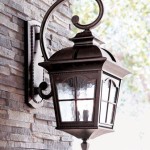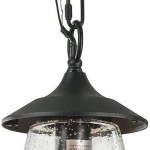Outdoor Wood Furnace Regulations: Essential Aspects
Outdoor wood furnaces (OWFs) provide an efficient and cost-effective way to heat homes and water, but they also emit particulate matter (PM) and other pollutants that can impact air quality. As a result, many states and localities have established regulations to control OWF emissions.
These regulations vary from jurisdiction to jurisdiction, but they typically address the following aspects:
1. Emission Limits
Most regulations establish emission limits for PM and other pollutants emitted by OWFs. These limits are typically expressed in pounds per hour or micrograms percubic meter of exhaust gas. OWFs must meet these limits to operate legally.
2. Fuel Restrictions
Some regulations restrict the types of fuel that can be burned in OWFs. For example, some jurisdictions may prohibit the burning of treated wood, painted wood, or wood with high moisture content. Using prohibited fuels can result in higher emissions and fines.
3. Installation Requirements
Regulations often include requirements for the installation of OWFs. These requirements may include the following:
- Minimum distance from the property line
- Proper ventilation
- Adequate clearance from combustible materials
- Use of certified chimneys or stacks
4. Operating Requirements
Regulations may also include operating requirements for OWFs. These requirements may include the following:
- Proper fueling and operation
- Regular maintenance and inspection
- Recordkeeping of fuel usage and emissions testing
5. Enforcement
Regulations typically include provisions for enforcement. This may include the following:
- Inspections to verify compliance
- Fines for violations
- Legal action in cases of serious or repeated violations
Additional Considerations
In addition to the aspects discussed above, there are other factors to consider when it comes to OWF regulations. These include:
- Local ordinances: Some localities have adopted their own OWF regulations, which may be more stringent than state regulations.
- New technology: As technology advances, new OWF designs may emerge that meet stricter emission standards.
- Public health concerns: Exposure to OWF emissions has been linked to respiratory problems and other health issues.
Conclusion
OWF regulations are essential for protecting air quality and public health. By understanding and complying with these regulations, OWF owners can help to reduce emissions and minimize their environmental impact.

The Alliance For Green Heat Outdoor Boilers

New Epa Rules For Wood Burners Set To Go Into Effect Features Messagemedia Co

Heated Up States Strive To Update Outdoor Wood Boiler Regulations Conform New Federal Rules

Wood Boiler User In Freetown Protests Proposed Regulations

Outdoor Wood Furnace And Solid Fuel Burning Guidelines Preventing Losses Grinnell Mutual

Heated Up Outdoor Boilers Cleaner Than Wood Stoves Boiler Lobby Tells Utah Legislators

Epa Certified And Approved Outdoor Wood Burning Furnace

Wood Boilers Strawbale Farms Wisconsin

Wood Boilers Save Money But Irk Neighbors

Frequent Questions About Wood Burning Appliances Us Epa
Related Posts







